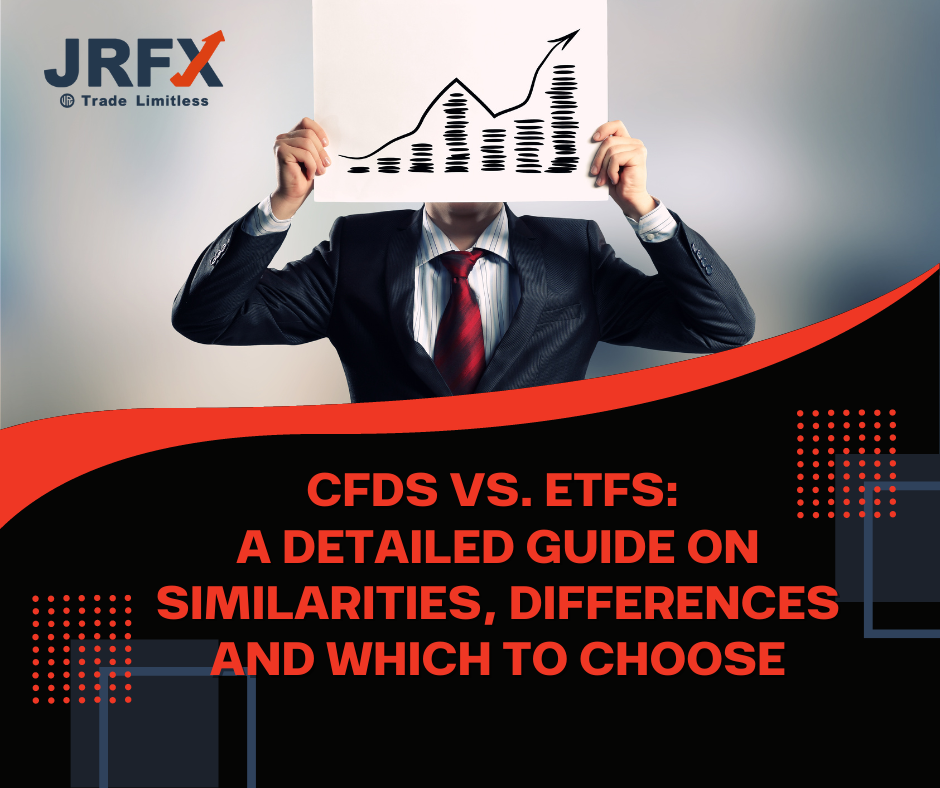

Two significant financial tools commonly employed in the financial markets are Contract for Differences (CFDs) and Exchange Traded Funds (ETFs). Both provide a vast array of market access and a multitude of trading possibilities. Please note that trading derivatives carries significant risks.
When looking at these two each presents distinct advantages and disadvantages. Here's an exploration into CFDs and ETFs.
CFD and ETF: Making the Choice
CFDs may be your preferred trading instrument if you:
- Seek to trade using margin or leverage
- Prefer over the counter trading
- Desire to trade various types of assets
- Aim to hedge your investment portfolio
- Don't wish to possess the underlying asset
- Possess a high tolerance for risk
ETFs may be the financial instrument of your choice if you:
- Wish to hold the underlying asset (even partially)
- Favor low-risk investments
- Intend to hedge your investment portfolio
- Seek to trade a diverse array of markets
- Choose markets with more liquidity
CFDs and ETFs: Common Ground
1. Wide-Ranging Underlying Assets
Both CFDs and ETFs enable you to trade across diverse markets encompassing stocks commodities currencies and indices. You can find ETFs specific to asset classes regions sectors and countries on any trading platform.
2. Leverage
ETFs and CFDs provide the option to trade on margin utilizing leverage. CFDs receive leverage through your broker. However remember that leverage can amplify both your profits and losses sometimes to the point of exceeding your investment.
3. Hedging
Both ETFs and CFDs can be used to hedge other positions in your portfolio. CFDs are a particularly potent tool for hedging as they can offset potential portfolio losses using leverage.
4. Liquidity
CFDs and ETFs share high liquidity within their markets. ETFs resemble mutual funds but trade like stocks offering flexibility and convenience for investors to buy and sell quickly.
5. Spreads
Both CFDs and ETFs have a spread defined as the difference between the ask price and the bid price.
6. Trading Duration
ETFs and CFDs have no expiry unlike assets like futures contracts. You can trade them over short-term (days weeks) or long-term (months years).
CFDs and ETFs: Key Contrasts
1. Ownership of Assets
The primary divergence between CFDs and ETFs revolves around asset ownership. With CFDs you merely trade price fluctuations of the underlying asset not owning the trading instrument itself. In contrast when purchasing an ETF you become a partial owner of multiple stocks it comprises.
2. Market Accessibility
You can trade CFDs over the counter while trading an ETF requires a long or short position from a centralized stock exchange.
3. Funding
CFDs are typically traded on margin. Conversely ETF trading often implies ownership of a part of the fund.
4. Risk Factors
CFDs carry a higher risk than ETFs but also offer increased potential for trading opportunities. ETFs on the other hand are associated with lower costs and allow a broader array of securities.
5. Expenses
ETF trading generally incurs lower costs than other instruments but may still be more expensive than trading CFDs.
Reasons to Favor CFD Trading Over ETFs
1. No Underlying Asset Ownership
CFDs are derivatives simply emulating the underlying asset not representing ownership. This reduces the capital required enabling traders to potentially benefit from short-term price fluctuations using swing trading strategies.
2. Leverage Accessibility
Most CFD brokers offer you leverage. With limited margin you can still open and trade fairly large positions. You can trade leveraged ETFs with similar efficiency to CFDs but this has two disadvantages. ETFs are less leveraged than CFDs and in some cases you may still have to pay the full cost of the asset.
3. Increased Flexibility
CFDs permit traders to speculate on price movements for numerous financial instruments allowing more precise position sizing through leverage.
4. Constant Quotations
Unlike ETFs which are tied to stock exchange hours CFDs offer extended quotes providing continuous trading opportunities and reducing slippage risk.
5. Ease of Access
Trading ETFs can be complex especially for novice traders. In contrast CFDs are easily accessible by merely opening an account and speculating on price movements of the underlying asset.
Why Opt for JRFX for CFD Trading?
• No interference in execution
• Low spreads zero commissions
• Fast execution most orders processed in less than 14 milliseconds
• Global node setting ultra-low latency data center
• Superior liquidity ensures optimal buying and selling prices
Discover JRFX App
• All-in-one Trading Platform
• Real-time synchronization with MT4 data
• Supports deposits and withdrawals
• Online customer service for prompt resolution of queries
• User-friendly trading ideal for beginners
Start trading by opening a live account here or practice trading with virtual currency with a demo account.

Views: 1648

Likes: 0
